A month ago, some speculation began to spread that the novel coronavirus would likely begin to tail off as we get into April. While President Trump was not alone in this speculation, his remarks got the greatest exposure.
Such ideas are not baseless, but they comprise only a hypothesis – a possibility – based on the behavior and contagion rates of some other viruses that peak in cold weather months and diminish with warmer and more humid weather. For example, the flu has hit the United States and other nations hard this winter and the rates of infection are beginning to diminish as they often do in March. The same is true of some common cold viruses (I have one of those). In the case of COVID-19, such an idea may seem reasonable as well, but there is not yet evidence to support it. It is not a flu virus, so there is no automatic analogy.
Part of the hypothesis is tied to increased humidity accompanying warmer air masses. Some respiratory viruses are known to have lower survival rates in warm, humid air, after thriving in cold, dry air. There is also reduced indoor crowding as the weather gets nice, so that route of contagion may lessen as warmer weather becomes more persistent. There is even a small chance more exposure to sunshine and its absorption of vitamin D may help, but there are no studies to support that.
All this hypothetical thinking is just that. This is a new virus and its behavior in warm air masses is highly uncertain. Dr. Marvin Lipsitch, a Harvard School of Public Health epidemiologist, told FactCheck.org the 2003 outbreak of SARS eventually tailed off in warmer months, but the evidence points to strict contagion controls rather than the weather being behind that decline. He noted COVID-19 is biologically similar to the SARS virus, though not close to identical.
As of now, there are no epidemiologists predicting with any confidence the rate of contagion is likely to drop next month; only that it is just a possibility. Here is what the CDC states on its authoritative site, CDC.gov, which I strongly recommend you bookmark: “It is not yet known whether weather and temperature impact the spread of COVID-19. Some other viruses, like the common cold and flu, spread more during cold weather months but that does not mean it is impossible to become sick with these viruses during other months. At this time, it is not known whether the spread of COVID-19 will decrease when weather becomes warmer. There is much more to learn about the transmissibility, severity, and other features associated with COVID-19 and investigations are ongoing.”
Harvard’s Lipsitch believes there was a small reduction in SARS after a second May outbreak that could be tied to warmer weather, but the reduction was not sufficient to make SARS go away.
Columbia University epidemiologist Stephen Morse told FactCheck speculation on April improvement at this time is “wishful thinking.” We simply do not know and won’t know until we get there. He pointed out one SARS outbreak became more controlled in April of 2003, but another outbreak peaked in May.
Morse also wrote of the 2009 H1N1 flu pandemic peaking in late spring and summer, as well as the major flu epidemic of 1957 in the U.S. thriving in warm weather.
A University of Toronto epidemiologist, David Fisman, notes COVID-19 is currently thriving in the tropical climate of Singapore. He has his doubts warmer April weather will sharply lessen contagion rates.
The most optimism I found in FactCheck.org came from Linsey Marr of Virginia Tech, who is more confident warmer weather will help. That may be, but I have to point out Marr is a professor of civil and environmental engineering, which is well outside of epidemiology or virology.
The most pessimistic summation comes from Lipsitch: “An April end to the outbreak would be truly astonishing. I think it will just be getting underway in much of the world.”
What I draw from surveying this material is the need for calm, rational thinking that involves taking sensible precautions. The catchphrase “social distancing” has become viral, no pun intended, because it has been used by virologists and epidemiologists as a behavioral tool to lessen the risk of contagion. You’ve all seen it by now – no handshakes, keep your distance, frequent 20-second hand-washing, avoid touching your face, cough into the crook of your elbow, stay home if you’re sick, etc.
There is still a chance warmer weather will slow contagion, but no one should be counting on that. For those who are undertaking social distancing, especially older folks, a nice walk in the sun can work wonders both psychologically and physically with no risk of contagion.
In the meantime, wild-eyed misinformation still populates social media, especially on Facebook and Twitter. Know your source. Stay in touch through cdc.gov and health.ny.gov.
You can also draw on the resources of major schools of public health at such institutions as Harvard, Johns Hopkins and Columbia, to name a few. These sources will help you keep your perspective and avoid panic spawned by uninformed rumor mongers.
Story topics: coronavirus/ COVID-19/ weather

